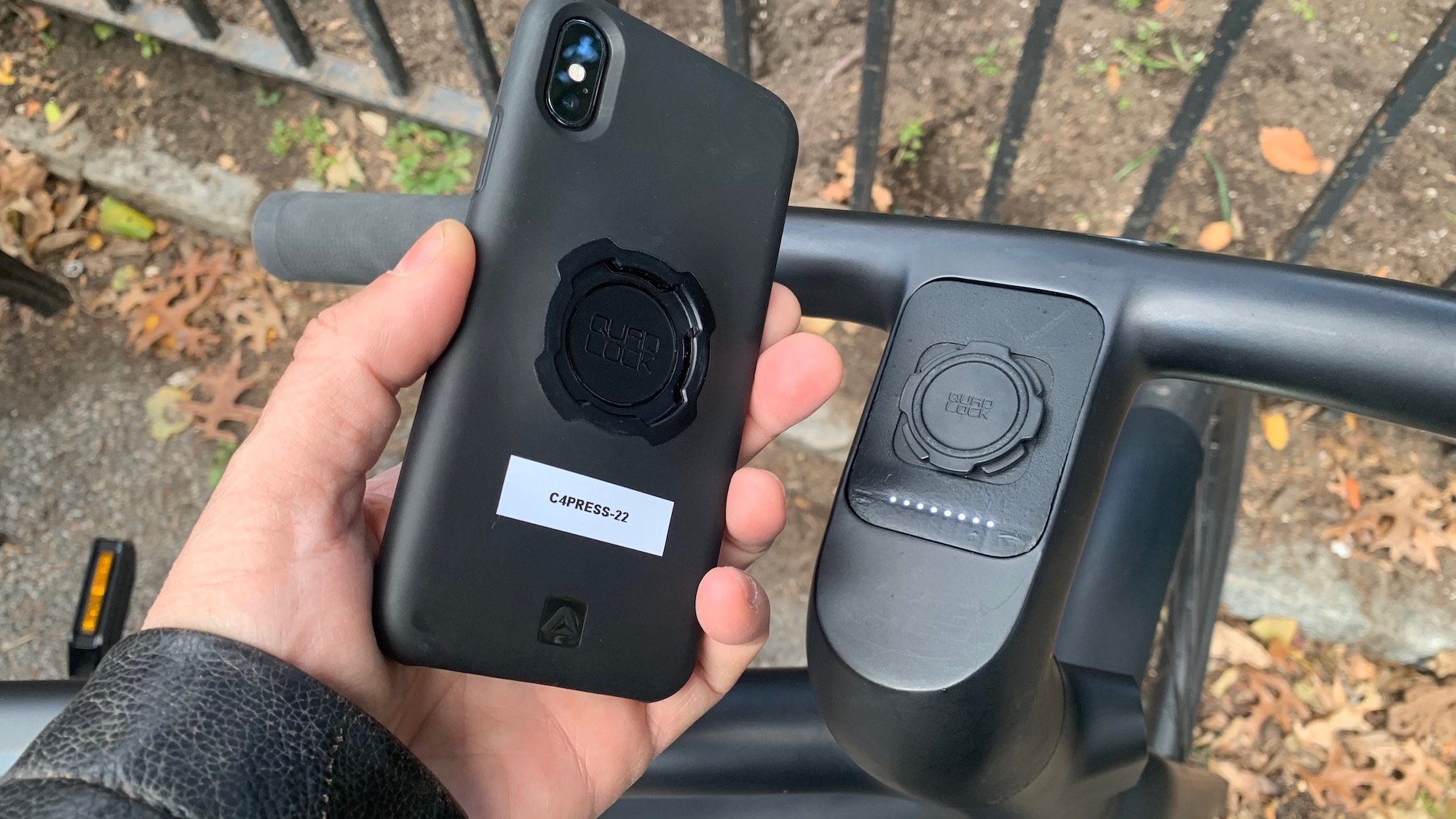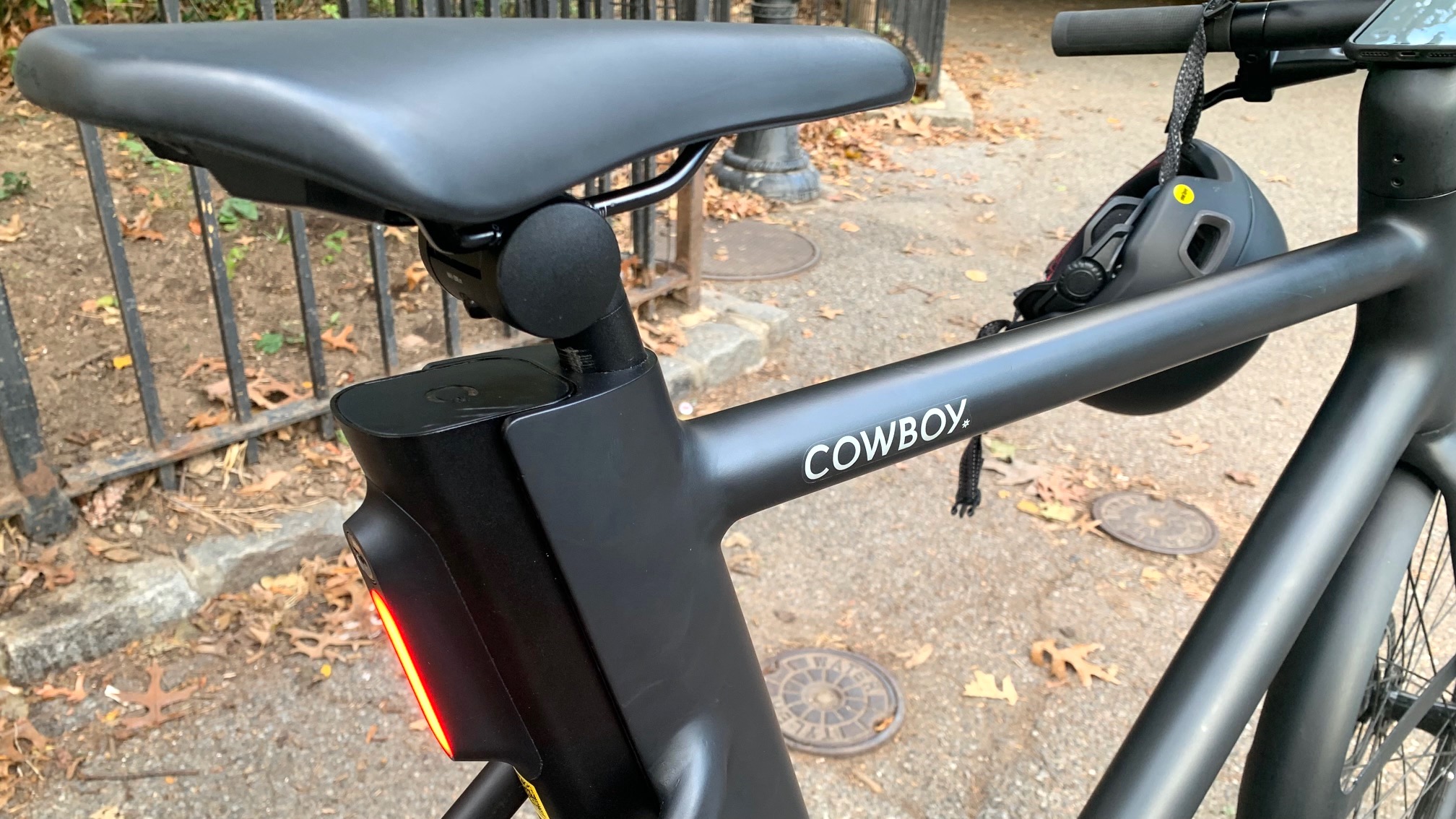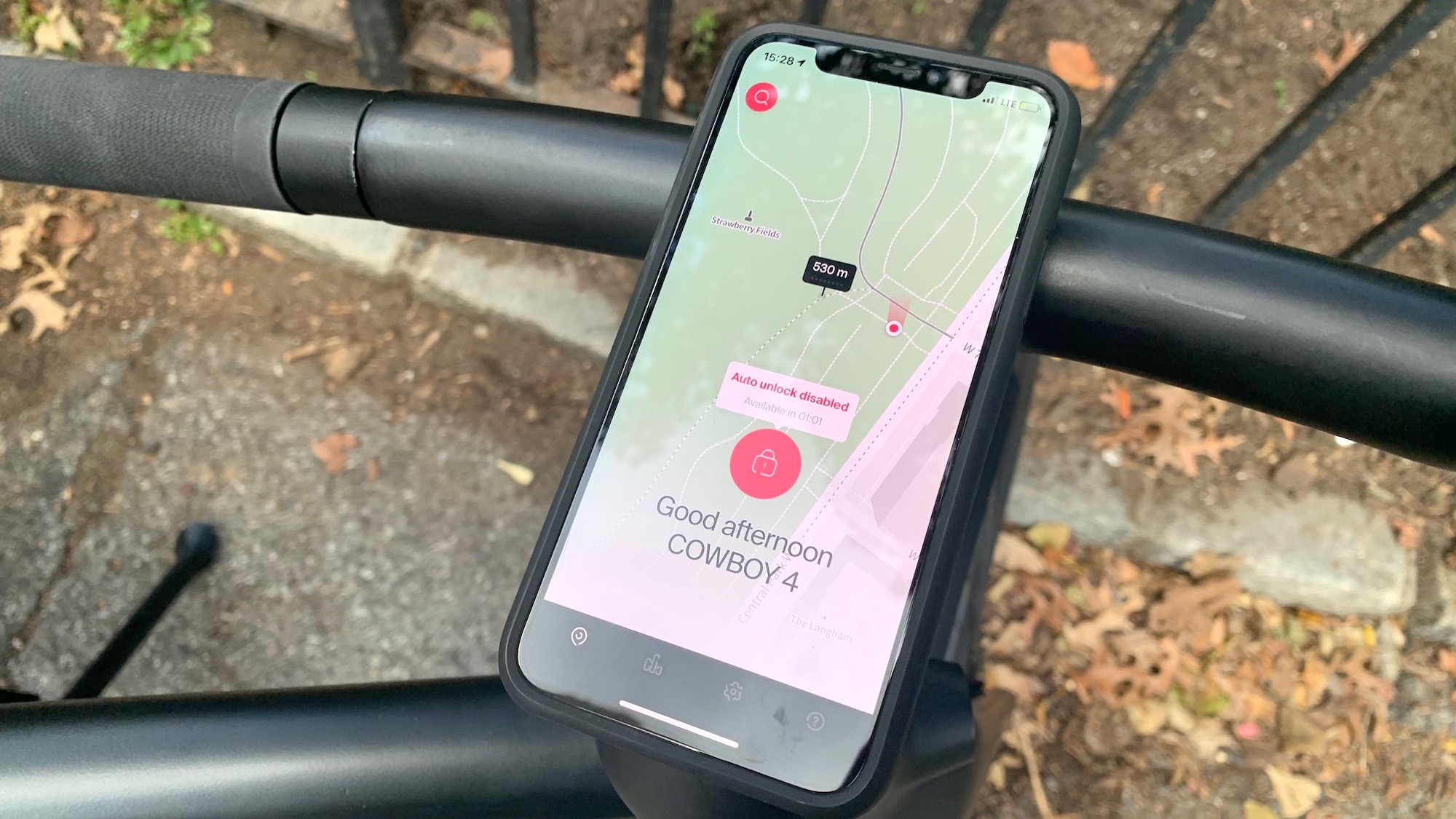Early Verdict
The Cowboy 4 is a sleek electric bike with a clever smartphone app.
Pros
- +
Great design
- +
Lots of smart features in app
- +
Recharges phone
Cons
- -
Single gear may be tough for hilly areas
- -
Lacks throttle
- -
Phone mount is iPhone-only
Why you can trust Tom's Guide
Is the Cowboy 4 the future of electric bikes? This sleek model features a smartphone dock between its handlebars that turns your iPhone into a digital dashboard, letting you navigate, find your bike and see your speed in real time. (It also charges your phone in the process). I had a chance to take a test ride with the Cowboy 4 around Central Park in New York to see how well it performed, as well as try out its smart features.
Cowboy 4: Price and availability
Both models of the Cowboy 4 cost $2,990, and are available now for purchase. They come with mudguards (which is nice), but if you want the phone case — which is a necessity — you’ll have to fork over an additional $29. It seems a bit cheap for a bike that costs this much.
At the moment, the company is only selling cases that are compatible with the iPhone (the SE, XR, and everything more recent are options). For Android owners, the company suggests purchasing the Universal Fit from Quadlock, which costs $60.
A kickstand and rear rack are sold separately for $99.
Cowboy also offers a few other services, only available by subscription.
Cowboy Care ($20/month) provides maintenance (such as a full bike checkup), brake pad and tire replacement, and a free duplicate battery key in case of loss. Currently, this service is only available in Chicago, Los Angeles, New York (Manhattan and Brooklyn only), San Diego, San Francisco, Seattle, Portland, and Washington, DC.
The company is also planning to offer Theft Insurance, details of which should be available by the end of January.
Get instant access to breaking news, the hottest reviews, great deals and helpful tips.
Like many other products, there’s a bit of a backlog between the time you order something and the time you can get it. The company says that bikes ordered in September should start shipping to U.S customers in the next two weeks, and bikes ordered in January should arrive in May. From May onwards, the company hopes to reduce delivery times to 4 weeks.

Cowboy 4 design and specs
Like the VanMoof S3, the Cowboy 4 has a real minimalist design that makes it look futuristic but not fussy. All the wires are contained within the black matte frame; more than a few onlookers asked about it as I was pedaling through Central Park.
The bike’s battery is detachable, and is just behind the seat post. I like it - it keeps the rest of the frame from looking too bulky. Built into one edge of the battery is the bike’s tail light. A rectangular light in the front adds to the bike’s high-tech look.

In between the handlebars is a small dock to attach your phone. You need to first insert your phone into a special case, which then connects the Cowboy app on your phone to the bike’s electronics. It turns your phone into a dashboard, and turns this ebike into a smart bike. Even better: the bike will recharge your phone via a Qi wireless charger when it’s docked, so you don’t need to worry about running out of battery.
Unlike most of the best electric bikes we’ve tested, the Cowboy 4 does not have a throttle button, so you can’t just sit back and enjoy the ride — you’ve got to pedal.

The company sells two models: A step-over and a step-through version. The step-over model is meant for riders from 5’6” to 6’4,” while the step-through version is built for those who are 5’3” to 6’2.” Either way, it’s not a small bike.
Both versions are available in black, green, or off-white, and have the same specs: A range of up to 43.5 miles, a top assist speed of 20 miles per hour, a 250W rear hub motor, and a 9.8Ah, 360 Wh battery. Both models tip the scales at 47.1 pounds. Also standard with both are hydraulic disc brakes, a carbon belt, and custom 27.5 x 1.85 tires.
Cowboy 4 app

What separates the Cowboy 4 from most other electric bikes is its connected app, which turns it into — for lack of a better term — a smart bike. Launch the app, and your phone turns into a dashboard for the bike, showing your speed, distance, and duration of travel. The GoCycle G4i+ has a similar smartphone app, but a much flimsier method of attaching your phone — and certainly not with a built-in charger.
In addition, the app has navigation built in, so you can program a route to get you from point A to B. During my test ride, I didn’t have a chance to see whether or not it followed bike lanes like you can do in Google Maps, or if it just used roads.
Other features in the app include a digital lock, predictive battery life, weather alerts, activity tracking and Find My Bike — helpful if you forgot where you parked it. Crash detection will offer to alert your emergency contacts if you go headfirst into a tree, while Theft Alert will ping your phone if someone tries to make off with your bike. However, this last feature requires a subscription.
In addition to tracking your activity, the app will also let you share your achievements with other Cowboy bike owners, and see how you compare to other riders. It’s probably a lot smaller than Fitbit’s user base, but you gotta start somewhere, right?
Cowboy 4: Performance

If you want to ride the Cowboy 4, it helps to be tall. I’m about 6’ and fit comfortably on the bike, but its geometry doesn’t allow you to raise or lower the seat all that much.
While the Cowboy 4 is only a single-gear bike, I didn’t have any trouble getting around the fairly flat lower half of Central Park. The bike’s pedal assist, which is applied based on your speed and torque, kicked in fast, and its motor was quiet, too.
The overall ride felt smooth, but the bike lacks suspension of any kind, so you’ll feel bumps and potholes more than you would on a bike with that feature.
While I didn’t get a chance to test out all the features of the app, it was nice to be able to look down and see where I was going.
Cowboy 4: Outlook

Between its design and its smart features, the Cowboy 4 aims for a different market than sub-$2,000 electric bikes like the RadPower Rad City 5, our current top pick among the best electric bikes. Aesthetically, its biggest competitor would seem to be the Van Moof S3, which costs about $700 less, and has a few of the same smart features, including a Find My Bike and activity tracking. The S3 also has a few things the Cowboy 4 lacks — namely, an automatic transmission and throttle.
However, the Cowboy 4 has a removable battery, and it can recharge your phone on the go, too. And, the convenience of using your phone as a digital dashboard for your bike is something that I anticipate will become a more standard feature in future electric bikes.

Michael A. Prospero is the U.S. Editor-in-Chief for Tom’s Guide. He oversees all evergreen content and oversees the Homes, Smart Home, and Fitness/Wearables categories for the site. In his spare time, he also tests out the latest drones, electric scooters, and smart home gadgets, such as video doorbells. Before his tenure at Tom's Guide, he was the Reviews Editor for Laptop Magazine, a reporter at Fast Company, the Times of Trenton, and, many eons back, an intern at George magazine. He received his undergraduate degree from Boston College, where he worked on the campus newspaper The Heights, and then attended the Columbia University school of Journalism. When he’s not testing out the latest running watch, electric scooter, or skiing or training for a marathon, he’s probably using the latest sous vide machine, smoker, or pizza oven, to the delight — or chagrin — of his family.

